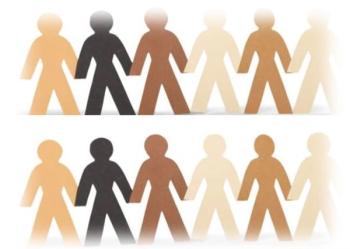
MRI Beats CT for Acute Stroke Diagnosis
BETHESDA, Md. -- MRI is better than CT for detecting acute strokes of any kind, and should be the diagnostic imager of choice in the ER, according to NIH researchers.
BETHESDA, Md., Jan. 25 -- MRI is better than CT for detecting acute strokes of any kind, and should be the diagnostic imager of choice in the ER, according to NIH researchers.
Comparing the two modalities in patients with suspected acute stroke, the investigators found that the sensitivity of MRI for diagnosing acute strokes was 83%, compared with just 26% for CT performed on the same patients.
MRI was also superior to CT at diagnosing acute hemorrhagic stroke and chronic stroke, and was comparable at detecting intracranial hemorrhage, reported Steven Warach, M.D., Ph.D., of the National Institute for Neurological Disorders and Stroke, and colleagues, in the Jan. 27 issue of The Lancet.
Among patients presenting within three hours of the onset of symptoms, representing the window for thrombolytic therapy of ischemic stroke, MRI successfully detected 46% of the cases, whereas CT's batting average was only 7%, they found.
"Our sample was representative of the range of patients who are likely to present with a clinical suspicion of acute stroke, including patients who ultimately proved to have a different diagnosis. Therefore, our results are directly applicable to clinical practice," they wrote.
In view of their results, they said, it is no longer justifiable for CT scans to be the standard criterion for diagnosis of acute stroke on the sole basis of accuracy.
In an accompanying editorial, Geoffrey A. Donnan, M.D., of the National Stroke Research Institute at the University of Melbourne in Australia, and colleagues, applauded the study, saying that it's about time someone answered the critical question of the preferred stroke imaging method.
"Why is MRI such an attractive imaging option for patients presenting with acute stroke?" they wrote. "The answer lies in its extraordinary ability to allow an immediate diagnosis of stroke and to generate non-invasively such a range of information about the status of blood vessels and the brain. The anatomical location of the area of ischemia and its viability (on diffusion-weighted imaging), together with arterial imaging (on magnetic resonance angiography), are important pieces of information, which allow the clinician to establish the mechanism of stroke."
Dr. Warach and colleagues conducted a single-center, prospective, blind comparison of non-contrast CT and MRI with diffusion-weighted and susceptibility weighted images in a consecutive series of patients who were referred to the Suburban Hospital in Bethesda for emergency assessment of suspected acute stroke.
A total of 356 consecutive patients were entered into the study, without regard to time of symptom onset, severity of symptoms, or the ultimate clinical diagnosis.
The patients were assigned to undergo both MRI and CT scanning, with the order of scans determined by clinical expediency, because randomization to one or the other first might have resulted in unjustifiable delays in clinical care, the authors noted. In most cases, patients underwent both scans within two hours of one another.
The images were analyzed independently by two expert neuroradiologists and two expert stroke neurologists who were not involved in the care of the patients and who were unaware of all clinical information. The image readers were asked to record whether they saw evidence of acute ischemic stroke, acute or chronic hemorrhage, no acute stroke, or a combination.
In all, 217 of the 356 patients (61%) had a final clinical diagnosis of acute stroke. The authors found that MRI more frequently correctly diagnosed acute stroke (either ischemic or hemorrhage), acute ischemic stroke, and chronic hemorrhage significantly more frequently than CT (P
"MRI can be used as the sole modality for the emergency imaging of patients with suspected acute stroke, whether ischemic or hemorrhagic," the investigators wrote.
"The high diagnostic accuracy of MRI was the same for scans within the first three hours as it was for the entire sample, and thus is relevant to patients who might be eligible for standard thrombolytic treatment of stroke," they continued. "Many stroke centers use MRI as the basis of thrombolytic treatment decisions, and where MRI is immediately available for emergency stroke diagnosis, initiation of thrombolytic treatment will not be substantially delayed."
In discussing the significance of the results, the authors wrote, "Although CT scanning has been the criterion that is standard for diagnosis of acute stroke, our study shows that use of CT is no longer justifiable on the basis of diagnostic accuracy alone."
They did acknowledge that non-contrast CT is generally more readily available and cheaper to perform than diffusion-weighted or susceptibility-weighted MRI. They therefore called for a study comparing whether immediate MRI or immediate CT in the emergency setting could improve patient outcomes and reduce costs associated with hospitalization, rehabilitation, and disability from acute strokes.
In their editorial, Dr. Donnan and colleagues noted that the only drawback to the study findings was that 11% of patients could not undergo MRI, either because of claustrophobia, the presence of cardiac pacemakers, or neurological or medical instability.
"Medical instability can be a problem when time in the scanner might be up to 30 minutes with standard imaging sequences, but these can be shortened to three to five minutes without losing crucial information," they wrote.
Newsletter
Enhance your clinical practice with the Patient Care newsletter, offering the latest evidence-based guidelines, diagnostic insights, and treatment strategies for primary care physicians.



















































































































































































































































































